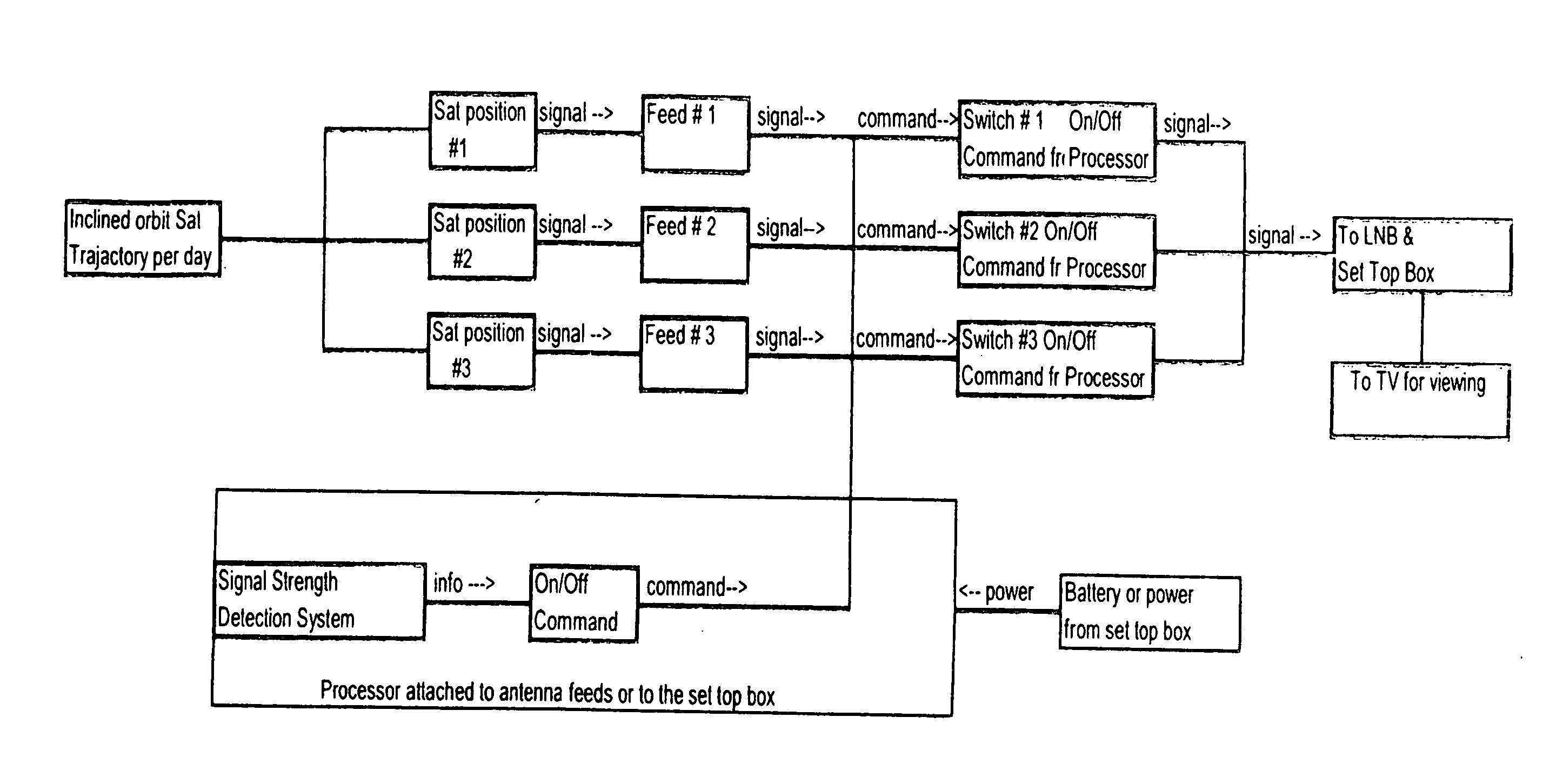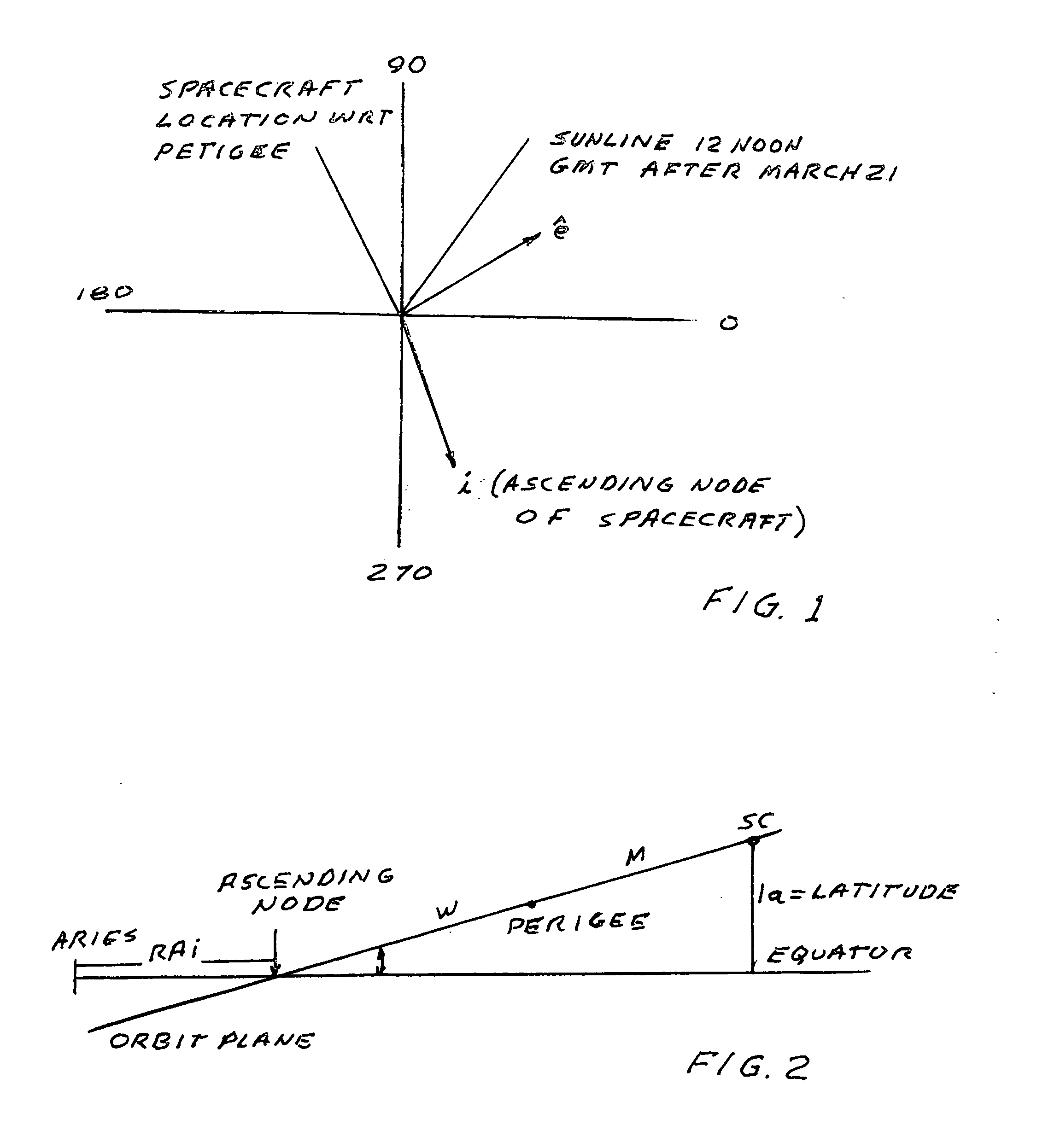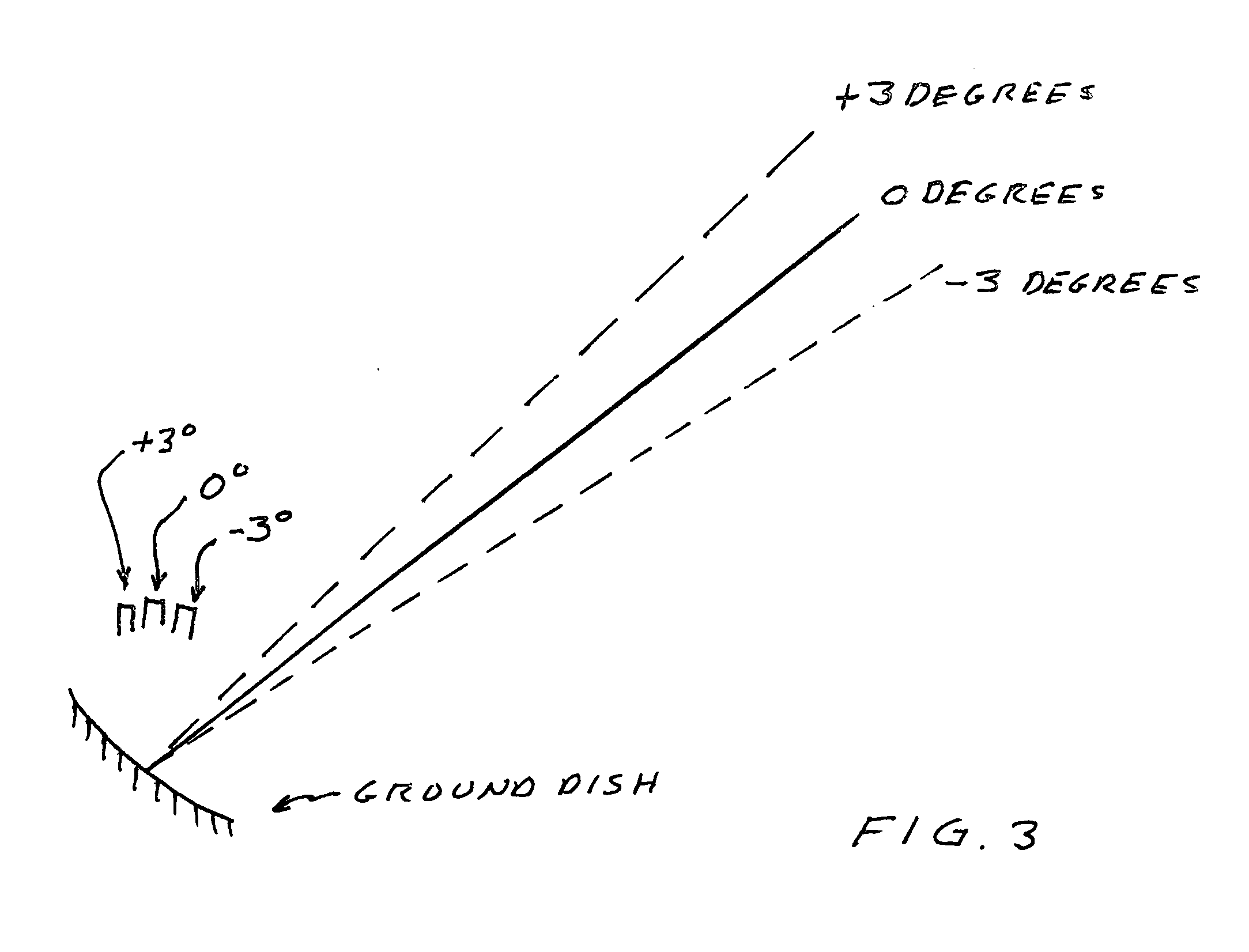Method and system for maintaining communication with inclined orbit geostationary satellites
a geostationary satellite and satellite technology, applied in the direction of radio transmission, electrical equipment, transmission, etc., can solve the problems of satellite end of life, complex and expensive prior art tracking systems, and high cost of tracking antennas, and achieve the effect of adequate communication
- Summary
- Abstract
- Description
- Claims
- Application Information
AI Technical Summary
Benefits of technology
Problems solved by technology
Method used
Image
Examples
Embodiment Construction
Orbital Adjustment of a Geosynchronous Satellite with No North-South Station-Keeping
[0044]When north-south station-keeping is terminated, inclined orbit operations typically begin. The satellite is assumed to be at the edge of its north / south box with an inclination starting at ˜0.1 deg, an ascending node near 90 deg and longitude maintained at its nominal station. The inclination wants to grow at ˜0.87 deg / yr along 90 deg ahead of Aries. The node, however, wants to regress at ˜6.72 deg / yr. What is important to note is that nodal regression with time reduces the amount of inclination increase as the node moves away from the direction of increase and the regression rate is reduced because of the increase in inclination along the 90 deg direction. It can be shown that, approximately:
i=2(0.87)cos(RAi) / (6.72 / 57.3)deg / yr=14.84 cos(RAi)deg / yr
RAi=(90−(6.72 / 2)t)deg=(90−3.66t)deg where t is time from zero in years
[0045]Note that the regression rate is reduced by a factor of 2 due to the secu...
PUM
 Login to View More
Login to View More Abstract
Description
Claims
Application Information
 Login to View More
Login to View More - R&D
- Intellectual Property
- Life Sciences
- Materials
- Tech Scout
- Unparalleled Data Quality
- Higher Quality Content
- 60% Fewer Hallucinations
Browse by: Latest US Patents, China's latest patents, Technical Efficacy Thesaurus, Application Domain, Technology Topic, Popular Technical Reports.
© 2025 PatSnap. All rights reserved.Legal|Privacy policy|Modern Slavery Act Transparency Statement|Sitemap|About US| Contact US: help@patsnap.com



